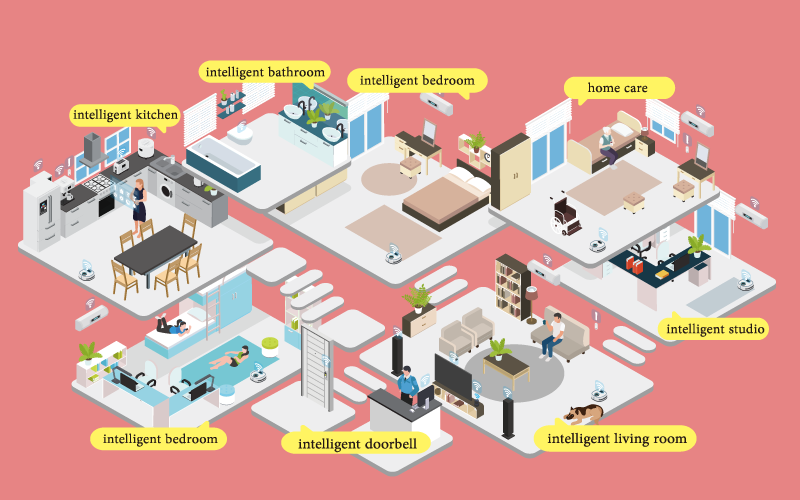AIoT Smart New Life-Innovative Service Model of Smart Home Community and Security

Under the flourishing of the various communication networks, IoT already had up to 12.5 billion objects connected to the Internet around the world in 2010; now, there are over 500 billion. After AI emerged, all objects connected to the Internet have upgraded comprehensively to AIoT (Artificial Intelligence of Things) through front-end or back-end computation, and the lives of people have gradually changed. The smart home is the most accessible innovative application today; it is an application scenario of AIoT, where a central device that can connect to the Internet connects all the sensors in the home, where they are triggered by incidents or connected to other sensors. For example, when the temperature sensor reaches the preset temperature, the air-conditioner is turned on to lower the indoor temperature. Automatic procedures can also be added; for example, preset the return home scenario so that when people get home, the return home mode is activated automatically to turn on the necessary lights and electrical equipment. After the Internet and AI are added to cameras, they also become members of AIoT smart networks, and they can be used with home care, telemedicine and remote visual conversation, etc., satisfying various smart home application scenarios.
Next, in terms of traditional security applications, past security cameras, regardless of any situational fields, are only monitoring equipment; past images are not checked unless there are special factors. Opportunities for real-time processing of real-time images are also often missed when no one is paying attention. However, now, with the help of AI, all traditional situational applications will change significantly.
Take a retail field scenario, for example. Most stores now have cameras installed in various angles of the field for monitoring, and these monitoring images can be used to calculate the number of customers, analyze customer trajectories, show shelf hot zones and dwell times, etc., through AI, and no longer only have the functions of monitoring and forensics after incidents.
Image information is converted into “Metadata” that can be analyzed and computed through AI and accumulated into big data through the Internet. Then, various reports can be interpreted through data analysis. This will become innovative services that the security control industry can provide; leasing and subscription-based information services will become the direction for the future transformation of the security control industry. Product applications of the security control industry must also be upgraded and changed with the technology trend in order to become sustainable.